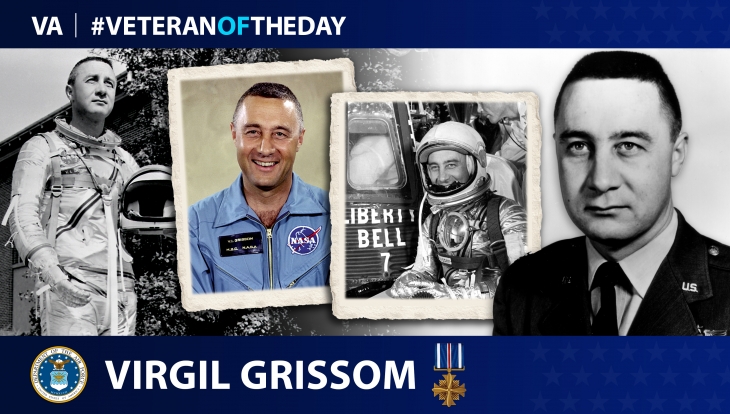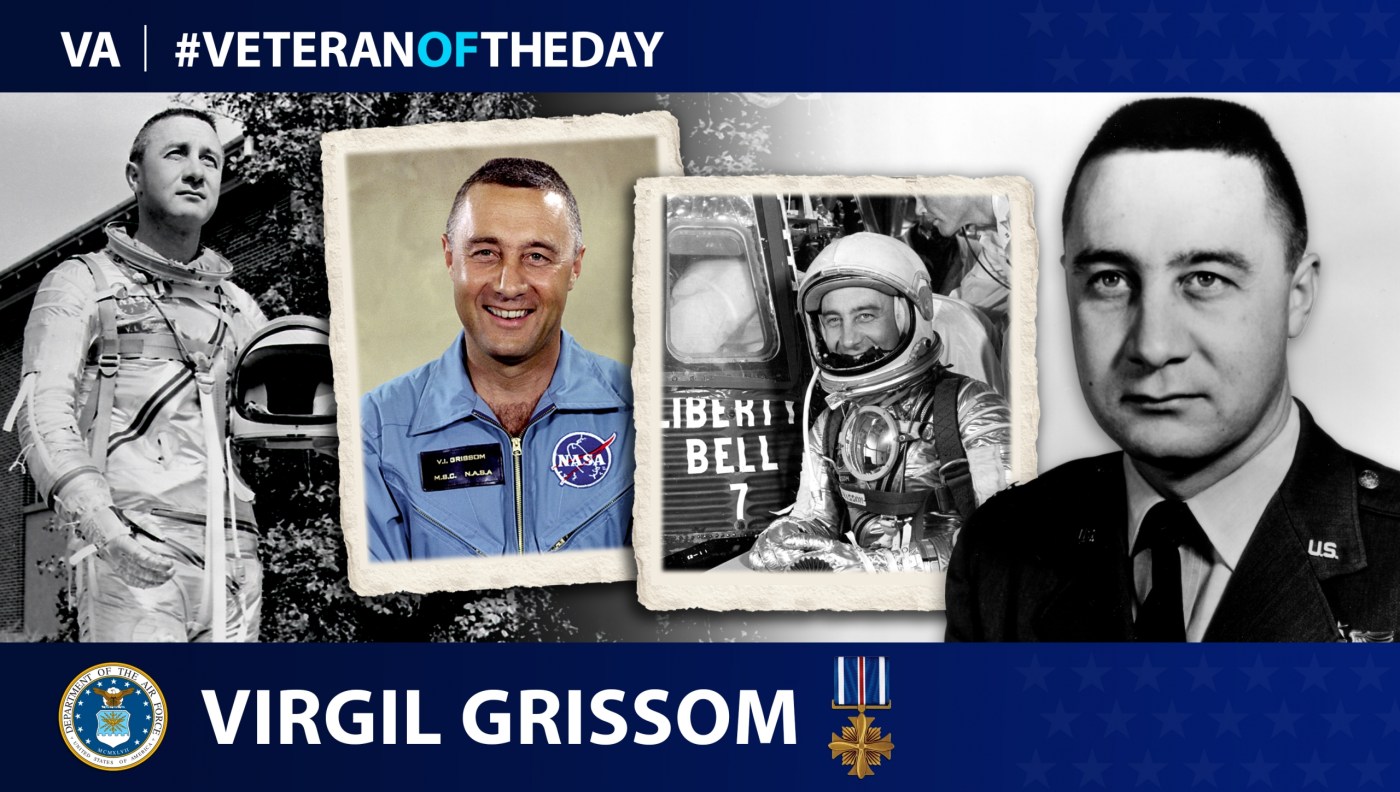
Today’s #VeteranOfTheDay is Air Force Veteran Virgil Grissom, who served as a fighter pilot in Korea and was one of NASA’s first astronauts.
Virgil Grissom was born in April 1926 in Mitchell, Indiana, and was the oldest of his parents’ four children. While Grissom spent his early childhood during the Great Depression, his father’s job as a railroad worker kept his family comfortable. During World War II, Grissom joined the Army Air Forces after graduating high school. Grissom hoped to become a fighter pilot, but the war ended before Grissom received the training to do so. Realizing that he would not receive the chance to fly, Grissom left the Army Air Forces in 1945.
Afterward, Grissom attended Purdue University and graduated in 1950 with a mechanical engineering degree. He joined the Air Force where he commissioned as a second lieutenant and earned his pilot wings in 1951. He soon deployed to take part in the Korean War with the 334th Fighter-Interceptor Squadron. There, Grissom flew an F-86 Sabre jet named “Scotty” after his son. Half a year later, Grissom completed 100 combat missions. While he requested to fly 25 more missions, leadership denied his request, and Grissom went back to the U.S. Grissom received a Distinguished Flying Cross and an Air Medal during the war.
Grissom’s next assignment took him to Bryan, Texas, where he served as a flight instructor. In 1957, after earning his credentials, Grissom became a jet fighter test pilot at Wright-Patterson Air Force Base, Ohio.
Several years later, Grissom received an invitation to earn a spot in NASA’s Project Mercury, its first human spaceflight program. While Grissom found NASA’s tests to be grueling, he along with six additional astronauts earned slots in Project Mercury in 1959. Here, Grissom became the second American to enter space when the Liberty Bell 7 spacecraft completed its sub-orbital flight. Grissom also became the first person to enter space a second time when he commanded Gemini III, NASA’s first manned mission of Project Gemini. The goal of Gemini III was to discover if space maneuvers were possible. Grissom completed orbital maneuvers while aboard the spacecraft, named “The Molly Brown.”
Grissom’s final mission occurred when he commanded Apollo/Saturn 204, the first crewed mission of NASA’s Apollo program. Grissom received command in 1966, but the launch date was postponed due to spacecraft issues. This pushed the launch date to Jan. 27, 1967. While Grissom’s crew was completing the final preparations to launch, a spark ignited a capsule of oxygen causing the spacecraft to burst into flames, killing Grissom and his crew. The mission was renamed Apollo I after the crew’s death.
During his service, Grissom achieved the rank of lieutenant colonel. He also received two NASA Distinguished Service Medals, a NASA Exceptional Service Medal and Air Force Command Astronaut Wings. Grissom also posthumously received a Congressional Space Medal of Honor in 1978.
We honor his service.
Nominate a Veteran for #VeteranOfTheDay
Do you want to light up the face of a special Veteran? Have you been wondering how to tell your Veteran they are special to you? VA’s #VeteranOfTheDay social media feature is an opportunity to highlight your Veteran and his/her service.
It’s easy to nominate a Veteran. Visit our blog post about nominating to learn how to create the best submission.
Contributors
Writer: Raymond Lin
Editors: Katherine Berman and Annabelle Colton
Fact checker: Ileana Rodrigues
Graphic artist: Kiki Kelley
Topics in this story
More Stories
This week’s Honoring Veterans Spotlight honors the service of Army Veteran David Bellavia, who received a Medal of Honor from the Iraq War’s deadliest operation, the Second Battle of Fallujah.
This week’s Honoring Veterans Spotlight honors the service of Army Veteran Scotty Hasting, who served in Afghanistan.
This week’s Honoring Veterans Spotlight honors the service of Army Veteran Roy Sheldon, who served in 97th General Hospital in Frankfurt, Germany.







We honor the service of Virgil Grissom.